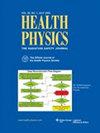以风险知情的目标辐射防护方法取代线性无阈值模型。
IF 1
4区 医学
Q4 ENVIRONMENTAL SCIENCES
引用次数: 0
摘要
线性无阈值(LNT)模型作为制定辐射防护法规和标准的简单基础可能是有用的,但它与科学现实几乎没有相似之处,而且在低剂量和低剂量率的情况下可能过于保守。本文呼吁从更广阔的角度看待辐射防护,而不仅仅是优化辐射剂量。本文建议用一种风险知情的、有针对性的方法来限制总体风险,包括辐射和其他类型的风险和事故/事件,以此取代 LNT 模型。重点应放在对个人的保护上。限制总体风险并不一定总是等同于最大限度地减少个人或集体剂量,但在某些情况下可能是这样。相反,应针对每个设施/和或具体工作或操作(直接针对放射摄影等专业工作)进行风险评估(危害分析),并以此指导如何利用有限的资源来保护工人和公众。可采用分级方法来确定最重大风险的优先次序,并确定不太可能或不存在的辐照情景。然后,剂量限值将代表一个可接受的风险水平,低于这个水平就不需要进一步降低剂量。应减少在 ALARA 和跟踪个人及集体小剂量方面所花费的资源。目前的剂量限值被认为是保守的,一般来说应该足够了。但有两个例外,一是可能需要降低宇航员眼球晶状体的(终生)剂量限值,二是将公众剂量限值从 1 mSv y-1 提高到 5 mSv y-1。这将使公众限值与目前对已申报怀孕工人的胚胎胎儿的限值保持一致。八项案例研究强调了辐射风险的多样性和复杂性,在某些情况下,化学和工业风险大于辐射风险。需要更加重视预防涉及各种类型风险的事故和事件。需要采取有针对性的方法,在改变承诺或给予豁免之前,应遵守承诺。这里无意批评监管机构或核工业人员。保护工人和公众是每个人的目标。问题是如何最好地实现这一目标。本文章由计算机程序翻译,如有差异,请以英文原文为准。
Replace the Linear No-threshold Model with a Risk-informed Targeted Approach to Radiation Protection.
The linear no-threshold (LNT) model may be useful as a simple basis for developing radiation protection regulations and standards, but it bears little resemblance to scientific reality and is probably overly conservative at low doses and low dose rates. This paper is an appeal for a broader view of radiation protection that involves more than just optimization of radiation dose. It is suggested that the LNT model should be replaced with a risk-informed, targeted approach to limitation of overall risks, which include radiation and other types of risks and accidents/incidents. The focus should be on protection of the individual. Limitation of overall risk does not necessarily always equate to minimization of individual or collective doses, but in some cases it might. Instead, risk assessment (hazards analysis) should be performed for each facility/and or specific job or operation (straightforward for specialized work such as radiography), and this should guide how limited resources are used to protect workers and the public. A graded approach could be used to prioritize the most significant risks and identify exposure scenarios that are unlikely or non-existent. The dose limits would then represent an acceptable level of risk, below which no further reduction in dose would be needed. Less resources should be spent on ALARA and tracking small individual and collective doses. Present dose limits are thought to be conservative and should suffice in general. Two exceptions are possibly the need for a lower (lifetime) dose limit for lens of the eye for astronauts and raising the public limit to 5 mSv y-1 from 1 mSv y-1. This would harmonize the public limit with the current limit for the embryo fetus of the declared pregnant worker. Eight case studies are presented that emphasize how diverse and complex radiation risks can be, and in some cases, chemical and industrial risks outweigh radiation risks. More focus is needed on prevention of accidents and incidents involving a variety of types of risks. A targeted approach is needed, commitments should be complied with until they are changed or exemptions are granted. No criticism of regulators or nuclear industry personnel is intended here. Protection of workers and the public is everyone's goal. The question is how best to accomplish that.
求助全文
通过发布文献求助,成功后即可免费获取论文全文。
去求助
来源期刊

Health physics
医学-公共卫生、环境卫生与职业卫生
CiteScore
4.20
自引率
0.00%
发文量
324
审稿时长
3-8 weeks
期刊介绍:
Health Physics, first published in 1958, provides the latest research to a wide variety of radiation safety professionals including health physicists, nuclear chemists, medical physicists, and radiation safety officers with interests in nuclear and radiation science. The Journal allows professionals in these and other disciplines in science and engineering to stay on the cutting edge of scientific and technological advances in the field of radiation safety. The Journal publishes original papers, technical notes, articles on advances in practical applications, editorials, and correspondence. Journal articles report on the latest findings in theoretical, practical, and applied disciplines of epidemiology and radiation effects, radiation biology and radiation science, radiation ecology, and related fields.
 求助内容:
求助内容: 应助结果提醒方式:
应助结果提醒方式:


